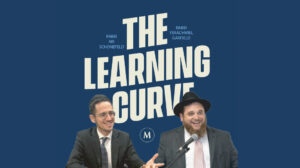Right Intentions


“When parents are contemplating an evaluation and a diagnosis they should go in with a clear mind and ask themselves the following: What am I hoping to gain from the diagnosis? How will this diagnosis guide treatment? What will I do differently if there’s a diagnosis?”
N o one knew what to do with Sharona. At school the ten-year-old struggled to follow her teacher’s directions. She’d space out during class and seemed to be in a world of her own. When her classmates would do benign things like touch the corner of her desk she’d explode. The teachers assumed that Sharona’s difficulties with focus and impulse control meant she had attention deficit hyperactivity disorder (ADHD). Diagnosed by her pediatrician Sharona was started on a stimulant.
But nothing changed. In fact the drug just made things worse — she was even more spaced out now and she was drowsy at all hours.
Sharona’s parents took her to another specialist Dr. Sara Gluck PhD LCSW clinical director of the Five Towns Wellness Center. That’s when they discovered that the stimulant wasn’t the problem — the diagnosis was.
“When Sharona was brought in to my office I ran a full assessment and found out that her trauma scores were abnormally high ” Dr. Gluck relates. “She told me her family had been in a terrible car crash the previous summer and she couldn’t get the images of the crash out of her mind. Experiencing nightmares flashbacks difficulty concentrating and an exaggerated startle reflex her symptoms were actually indicative of post-traumatic stress disorder — not ADHD.”
Once correctly diagnosed with PTSD Sharona stopped taking the stimulants and was able to learn how to process her traumatic memories and cope with flashbacks. Dr. Gluck also provided her teachers and parents with information about how the traumatized brain functions and this helped them treat Sharona with more understanding. Several weeks later Sharona was a happy fourth-grader who could begin to catch up on all the school work she’d missed earlier in the year.
Missing the Mark
“I often speak to wonderful devoted parents who’ve gone into debt trying to help their children — without results. All because their children’s difficulties haven’t been properly diagnosed and the parents were going for the wrong kind of help” says Rivky Katz a multisensory kriah and ksivah and social skills specialist. “Many times they followed the advice of a friend neighbor or other nonprofessional.”

Legally and ethically only specific licensed professionals can make diagnoses. At times though well-meaning and knowledgeable educators referral services and other professionals tell parents that their child has — or doesn’t have — any number of conditions. What they should be doing instead “is simply sharing data about the red flags along with a recommendation of where to go to check it out ” says Mindy Rosenthal MS BCBA who has a private practice in Lakewood.
When Mrs. Katz was preparing for a Torah Umesorah workshop on kriah the organizers asked her to talk about the importance of using a research-based remediation program. “You wouldn’t rely on a neighbor to diagnose your heart condition nor would you say ‘My heart is all better after open heart surgery because I feel better’; you’d go for an echocardiogram!” Mrs. Katz emphasizes.
“There are well-researched methods for accurate diagnosing. The diagnostic tools measure brain activity and supply factual information. You can’t rely on what your gut says or what your neighbor or son’s teacher says. Go for the professional evaluation just as you’d go to the top doctor for a heart condition.”
Well-meaning nonprofessionals can also make the mistake of assuming a child has a condition that’s “in vogue.”
“There are often trends in diagnosing that come and go with time,” Dr. Gluck says. “Over the course of my career, I’ve seen the trends change. Parents used to bring their children in for ‘social skills’ problems. Then it became ‘Does my child have a sensory disorder?’ which transitioned to ‘My child has terrible anxiety!’ Regardless of the trends, if a child is in pain, there’s no substitute for an objective and comprehensive assessment by a competent child mental health professional.”
In some cases, the diagnostician is a certified professional, but he makes a diagnosis based on limited information. “Some diagnosticians will label a child as ADHD based on one teacher or parent completing a questionnaire. But if that adult has an inaccurate perception, it can cause an inaccurate diagnosis,” Mindy says.
Devora Samet, director of the Social Learning Institute in Brooklyn, stresses that in order for an evaluation to be accurate, the parents can’t hide anything from the diagnostic team. “If you don’t share that the child recently experienced something painful, or that there’s serious stress in the house, the issue may be seen and treated as a behavioral issue when it really should be treated as trauma,” states Devora, who is also a clinical psychology doctoral student at Long Island University.
Knowledge is power when you’re a diagnostician, which is why Dr. Gluck is so thorough in her evaluations. “By the time children reach my office, they’ve often been labeled by previous clinicians or educators, yet upon performing a full assessment using a combination of psychometric testing, child observation, and parental feedback, there are times when I change the child’s previous diagnosis,” says Dr. Gluck. “It’s the diagnosing clinician’s job to look at the symptoms as one part of a puzzle and to consider the child as a whole unique human being before drawing conclusions.”
The most commonly missed diagnosis Dr. Gluck sees is PTSD. The symptoms of PTSD are very similar to those of ADHD and oppositional defiant disorder (ODD). Children who have been traumatized may have a hard time focusing, may struggle to regulate their feelings and handle frustration, and may be irritable or defiant. Those symptoms alone would match several presenting diagnoses.
It can also get complicated when a diagnosis is based primarily on behaviors or symptoms, says Mindy. “Because a parent might think, ‘Does the diagnosis still apply when certain skills are taught and behaviors or symptoms are extinguished?’ This often prompts parents to pursue the wrong type of treatment, or not to pursue the necessary treatment, which can have long-lasting repercussions.”
A Slippery Slope
If a misdiagnosis goes unnoticed or unaddressed, it often creates a web of new challenges. The lack of treatment can cause regression in the problematic areas, which can lead to difficulty in following along in class, which often leads to behavioral and social issues — which further camouflage the real issue.
“The worst part of a wrong diagnosis,” says Mrs. Katz, “is that the child begins to identify himself as having those issues, and then lives up to those expectations.”
Mrs. Katz has seen children labeled as autistic when they simply had learning issues. “When we lower our expectations of a child, we become accepting of low performance levels, and don’t give the child the treatment he needs. Then he doesn’t get a chance to develop in areas where he can excel.”
This mentality, unfortunately, is not a rarity. Mindy once recommended that a seventh-grader join a social skills group to learn techniques for maintaining friendships. The mother quickly dismissed the idea: “My daughter is socially off because she’s on the spectrum.”
Another story is told by Devora, who was working with a client who had developmental delays. “The mother babied the child — helping her get dressed, responding for her when the child ignored others, and so forth, despite the fact that this child was definitely capable of learning these skills,” says Devora.
Sometimes, parents mistakenly allow their children to get away with certain behaviors because of the diagnosis. For example, a parent may excuse his son’s disrespect by saying, “He has difficulty with impulse control.” This attitude is then embraced by the child: Mindy once suggested that a creative and talented eighth-grader bake a cake for an upcoming event. “Oh, no, I can’t do that! I have executive dysfunction!” was the reply.
“A diagnosis is a valuable asset when it’s used to pinpoint and direct a plan of treatment to accomplish a set goal. But when it’s used as a way of excusing and blaming one’s faults, as opposed to taking responsibility, it’s a dangerous place to visit,” says Mindy.
Devora also cautions parents not to resign themselves to special-ed options. She tells a story about a five-year-old whose principal suggested she might need a special-ed program because of social and behavioral difficulties. Devora was hesitant: “When children are in a special-ed classroom, they typically don’t have mainstream role models, and the teachers won’t have ‘mainstream’ expectations,” she explains.
After working with the five-year-old for a few weeks, Devora recommended that they try repeating pre-1A instead and employ a trained shadow who would work with her social and behavioral issues. The parents did that, and by midyear of first grade, there was no way to tell the child apart from her peers in most areas.
“For children who aren’t on par with the mainstream level socially, behaviorally, and academically, special ed is a wonderful setup,” says Devora. “For other children, though, this setup lowers expectations and thus performance. If you’re going to put a student into a self-contained classroom, there should be evidence of social, emotional, behavioral, and academic difficulties. If a child has difficulties in only one area, keep the child in a regular-ed classroom and provide extra help in areas where the child is lacking.”
Finding the Right Evaluator
With all the dangers of a missed or mislabeled diagnosis, how can you ensure that your child will be properly diagnosed?
Recommendations are the first line of defense. But even that isn’t a surefire guarantee you’ll find the right professional. What may have worked for others may not necessarily work for your child.
“If your child has more than just mild speech or fine-motor problems, go to someone who is competent in diagnostics in a broad range of fields,” Devora says. “Just like everything becomes a nail to a hammer, when you take your child to a specialist in a specific therapeutic area, they may find your child’s challenges symptomatic of a disorder in their particular field —and they miss the bigger picture.”
Devora recommends that parents take their child to a clinical or hospital setting, where a team approach is often used. This way, a broad range of professionals analyze the case and you get a well-rounded diagnosis.
It’s also important to see someone familiar with your culture so that your child doesn’t get penalized for not knowing certain information. Many frum children (as well as adults) from insular
communities who don’t watch movies or sports won’t be able to answer many questions at neurological evaluations simply because they’re lacking information, not necessarily intelligence.
“When you call an evaluator — this term includes psychologists, social workers, psychiatrists, or mental health clinicians — ask how they evaluate children,” advises Dr. Gluck. “A competent professional will use information from several sources within a child’s life, such as teachers and parents.” Good evaluations may also include the use of psychometric testing, which is a way to obtain objective scores of emotional well-being and psychological function.
Devora adds that if a professional diagnoses your child, and then later on adds an additional diagnosis to the picture, that doesn’t mean the professional is looking for unnecessary problems or is incompetent. “It would be nice and neat if behavioral issues were detectable in a simple blood test, but that’s not the reality. As a therapist works with the child over time, she may detect more issues or potential disorders. Additionally, as the child improves in one area and it no longer overshadows everything else, smaller-yet-significant issues may become apparent.”
Wait and See?
Is there any room to say that your child is a late bloomer, and that he’ll outgrow the issues soon? Must we always run for an evaluation? Is there ever room to “let our kids be kids” and take the wait-and-see approach?
“You can’t err by getting an evaluation,” Mrs. Katz says. “There’s a reason why government subsidies are available in a broad range of therapeutic intervention until the age of five; the earlier you start, the better. Visiting a neuropsychologist or child psychiatrist may be expensive, but it gives accuracy and saves a lot of money on unnecessary treatment plans in the long run.”
At the same time, Mrs. Katz says that unless there’s a huge warning sign, preschool children generally don’t need intense therapy.
By the age of six, though, parents should be on top of their children’s progress. “If they haven’t caught on to reading at this age, they’re going to fall behind in many areas,” Mrs. Katz says. “This is especially true for boys, who start learning Torah in depth at a young age — if they can’t follow along, they’re apt to fail in all areas.”
In the social arena, she says that if children are happy up until first or second grade, that’s fine, even if they don’t have friends. But by the time they’re nine or ten, they’ve developed a sense of who they are, and if they perceive themselves as the “lonely, friendless kid,” or as the bully or troublemaker in the class, their resilience is negatively impacted, and they’ll most likely hold on to that label for a long time.
Parents are sometimes afraid of stigma, Mrs. Katz says. “However, they don’t realize how common these issues are. One in seven children have a learning difficulty. If you have an average of ten children, there’s a good chance that one of your children is going to have a learning issue. Furthermore, if an issue isn’t treated early on, the risk of having a child turn away from the family’s values, or needing a special yeshivah, will rise, and that’s going to speak a lot longer and a lot louder than a learning difficulty, or a child on medication, or any other childhood behavior issue.”
Devora gives an excellent rule of thumb to judge whether a child needs help, or is simply being a child: frequency, intensity, and duration. If a child isn’t doing her homework as frequently as two to three times a week, for example, that’s an alarm signal; if it’s just two to three times every couple of months, that’s okay. Similarly, if your child has more than some jitters about the first day of school and is literally shaking, that falls into the “intensity” category. As for duration, if the problem is ongoing — for months or years at a time — it’s serious.
“If you’ve got just one of those three — frequency, intensity, or duration — in a disturbing manner, address the problem,” Devora says. “If your kid has always been a late bloomer, and you want to give her a little bit of extra time to develop, that’s a fair request. If you want to try addressing it on your own before going to a professional, especially if you have training in that area, that’s also understandable. However, if you tried strategies on your own and you’ve given your child some extra ‘blossoming’ time, but the problem is still present, don’t just ignore things and hope that they’ll go away on their own.”
You also want to look at how the challenge is impacting the child’s daily life, says Dr. Gluck. But it’s important to understand what “impacting daily life” means. She gives an example of parents who approach her with a concern along the lines of, “My child has a habit of hugging and kissing me good night in a special order — do I need to get her checked out for OCD?”
Her response? Let it go unless it affects the child’s daily physical, social, or academic functioning. Children often have quirks and habits that never become pathological, and there’s no need to be overly concerned about most of those quirks.
What if your child’s challenge persists and gets worse over time? Then it may be wise to get your child evaluated. For example, a child fails to form friendships in preschool, but is otherwise happy. The child enters first grade and doesn’t get invited for play dates, but still seems content during school hours.
In this scenario, though the child is happy, the social difficulty didn’t go away on its own and presented in an area that is crucial for child development (socialization). It’s likely that there’s an underlying factor in the child’s social interactive style that will only become more and more present with age. Despite the child’s contentment, a lack of social skills is something that can impact him in a big way, and it’s best to get him evaluated.
Dr. Gluck also gives credit to parental intuition. “I’ve seen many parents bring children in for treatment because of a gut feeling that something just wasn’t right,” she says. “Sometimes, I evaluate the child and give him or her a clean bill of mental health. More often, I find an underlying problem that the parents were perceiving but didn’t know how to articulate. I’ve learned to never ignore parental intuition.”
Devora adds that if parents are concerned by new behaviors, they should take a closer look at the child’s environment: “Find out how many other children in the class are acting the same way. If the class is out of control, it’s possible that your child is simply being influenced by those around him. Providing teacher support to get the class under control might be a better solution than labeling the child as having a behavioral problem.”
Is the Diagnosis Correct?
The diagnosis is in, and it seems to be the right one. But what can you, as a parent, do to ensure that the diagnosis received was in fact on target? More importantly, how can you help treat the difficulty?
“When parents are contemplating an evaluation and a diagnosis, they should go in with a clear mind, and ask themselves the following: What am I hoping to gain from the diagnosis? How will this diagnosis guide treatment? What will I do differently if there’s a diagnosis?”
Sometimes the clarity and validation of why a child is acting a certain way tells us how we need to work differently with this child. If a child is on the spectrum, for example, a parent will know to explain hidden social rules instead of expecting her to pick up on them automatically. Or, if parents know their child isn’t speaking up in class or conversing well with peers due to anxiety, as opposed to a language processing disorder, they know to look for a mental health professional instead of a speech therapist.
Mindy underscores that evaluations should place a strong emphasis on practical goals. Based on all knowledge and data culled, evaluators should set specific and personalized goals. This can shorten the therapy process, because the therapist can individualize his sessions to focus only on the direct skills that are needed. For this to happen, however, parental involvement is essential.
For example, if a child has difficulties with executive function, the mother needs to help her daughter follow a routine chart, and allow her to experience the natural consequences when she doesn’t. Her teacher should use clear transitional phrases to help the student notice and focus on the new activity, and write directions on the board (e.g., page 45 in math workbook, examples 1 to 10) so that the student can use it to help redirect herself.
Over time, you should begin to see your child overcome his hurdles and succeed at reaching his goals. Indeed, if you’re able to chart consistent progress, chances are the diagnosis is correct.
“All people are works in progress,” Mindy concludes. “We all have natural strengths and weakness. Everyone — diagnosis notwithstanding — is obligated to build up their strengths and work on their weaknesses.”
(Originally featured in Family First Issue 557)
Oops! We could not locate your form.












